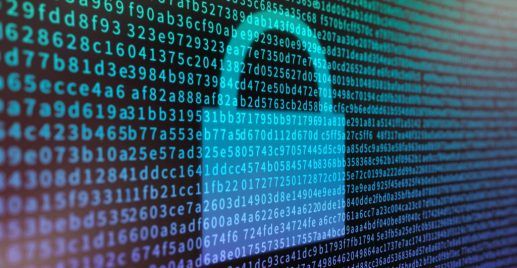In today’s digital world, data loss can have devastating consequences for individuals and organizations. While backups provide protection, restoring scattered files from backups is cumbersome and often results in downtime. This is where mirror imaging comes in – creating an exact replica of an entire system or drive.
This comprehensive guide will demystify mirror imaging. We’ll cover:
- What mirror imaging is and how it differs from basic backups
- The technical details behind creating system images
- Why mirror imaging is superior for data protection
- How it compares to disk cloning
- Real-world benefits like hardware migrations and disaster recovery
- Exciting advances in imaging technology
- Common imaging applications, frequencies and integration with security
With so much relying on digital systems, mirror imaging provides an invaluable insurance policy against data disasters. Read on to learn how to leverage imaging for robust data protection!
Table of Contents
What is Mirror Imaging?
Mirror imaging, also known as system or disk imaging, involves making an exact copy of the contents of a computer hard drive or other storage device. This includes:
- The operating system, applications, and data files
- Installed software licenses and security certificates
- User settings, preferences, and profiles
- System recovery options
- Boot records and partitions
- File structure hierarchy
The complete image is captured as a single compressed file or written to another disk byte-by-byte. This replica can be stored on external media or on a disk partition.
Mirror imaging differs from traditional file backups which only copy selected data. Imaging captures the full drive contents in their native environment. This allows quicker and simpler restoration to dissimilar hardware, migration to new systems, and recovery from failures.
Imaging is also more comprehensive than cloning which directly replicates one disk to another. Images exist as separate files for greater portability. The key advantage of imaging is the convenience of restoring entire working environments or quickly replicating standardized server setups.
Anatomy of a Mirror Image
Mirror imaging a system is like taking an exact photograph of the drive in its entirety. Some key technical aspects include:
- Sector-by-sector copies: Imaging replicates every disk sector bit-by-bit regardless of having data or not. This achieves full fidelity.
- Compression: Image files use compression to reduce storage needs while retaining all data. Standard algorithms like LZMA or AES-256 are used.
- Checksums: Integrity verification uses checksums to validate successful image creation and restoration. This guards against data corruption.
- Incremental imaging: After full images, only changed sectors are captured to save time and storage space.
- File formats: Common formats are vendor-specific like Ghost (.gho) or cross-platform like DD (.dd). Several allow virtual mounting.
- Storage media: Images can be stored on external drives, optical discs, cloud storage, redundant servers, or a dedicated network share.
- Encryption: Images may be encrypted using AES 256-bit or other strong encryption to prevent unauthorized access.
- Metadata: Useful descriptive information like dates, contents, and source system details are captured alongside images.
Precisely capturing machine state is what makes imaging so powerful for backup.
Superiority over Traditional Data Backup

Mirror imaging offers unique advantages over basic file backups that make it indispensable:
- OS and machine state: In addition to files, settings and installed apps allow restoring a working environment.
- Quick full restores: Entire disk contents can be quickly restored versus piecing back individual files from backups.
- Dissimilar hardware migration: Full images allow restoration to machines with different hardware since full environments are moved.
- Minimizing downtime: Fast restoration of complete systems reduces downtime versus backups relying on gradual repopulation.
- Standard machine configuration: Images maintain identical server configuration for rapid cloning and scaling of infrastructure.
- Portability: Images exist independent of source computers as distinct mountable entities that are easy to migrate anywhere.
- Encryption and compression: Inbuilt security and size optimization handles these aspects without separate tools.
- Backing up the backup: Images provide an extra layer of protection by capturing backup images themselves for redundancy.
- Investigations: Images capture system state for forensics after incidents. This preserves evidence integrity.
For both data protection and managing systems at scale, mirror imaging is indispensable.
Mirror Imaging vs Disk Cloning
While mirror imaging and disk cloning both replicate systems, they differ in some key ways:
- Direction: Imaging copies OS and contents as files to separate media while cloning duplicates contents from one disk directly to another.
- Portability: Image files are portable and storable while clones are tied to disks with no native portability.
- Incrementals: Images easily allow capturing changes only while cloning requires redoing the full copy.
- Restoration: Images can restore to dissimilar hardware while clones require identical or closely matched disks.
- Compression: Images create compressed files while cloning replicates at disk capacity.
- Purpose: Imaging is best for backup/recovery while cloning facilitates disk replacements and upgrades.
- State capture: Images can backup current system state while cloning may require shutting it down.
- Speed: Cloning hard disks faster while imaging over networks is relatively slower.
The choice depends on specific requirements. Imaging protects against failures while cloning migrates systems to new disks. Combining both provides comprehensive protection and migration capability.
Practical Benefits of Mirror Imaging
Mirror imaging delivers vast practical benefits for individuals and enterprises:
- Hardware failure recovery: Images allow full recovery from disk crashes quickly and reductions of downtime.
- New system migration: Images simplify transferring current setups like OS, apps, and configurations to new machines seamlessly.
- Scaling servers: Images help quickly replicate standardized server configs across infrastructure for scalability.
- Investigations: Images provide forensic snapshots of systems at points of time that can reveal details about cyber attacks.
- Testing environments: Images allow creating staging testbeds by restoring them to separate hardware without impacting production.
- Disaster recovery: Offsite archival of images accelerates recovery of operations from catastrophic data loss.
- Legacy systems: Images future-proof legacy system states by allowing restoration even after hardware becomes obsolete.
- Portable environments: Images enable provisioning complete portable system environments across devices and platforms.
With so much relying on IT systems today, mirror imaging is indispensable insurance against data disasters and for scaling infrastructure efficiently.
The Future of Mirror Imaging

Recent evolution in mirror imaging capabilities provides an outlook into some emerging trends:
- Cloud integration: Cloud image repositories allow simple disaster recovery by restoring entire systems to the cloud after outages.
- Containerization: Mirror images help replicate containerized application instances across hosts for portability.
- Faster imaging: Incremental block level imaging and compression maximize performance during image creation and restoration.
- Virtualization: Imaging integrates tightly with hypervisors to snapshot VM states providing portable images and backups.
- Immutable images: Write-once immutable images safeguard against data tampering and ransomware within images.
- Blockchain timestamping: Blockchain-backed timestamping proves image integrity and time of capture as an extra authenticity check.
- Remote replication: Fast imaging over WAN/LAN allows efficient multi-site image replication enabling geographic redundancy.
- Security integration: Images work alongside malware scanning and analytics tools to harden restoration points.
As technologies converge, mirror imaging is poised to provide faster, secure, and more automated data protection capabilities to counter intensifying threats.
Conclusion
As data becomes increasingly valuable, mirror imaging provides a quick and comprehensive insurance policy against system failures and accelerated recovery from cyber attacks.
FAQ’s
Mirror imaging, in the context of data backup, refers to the process of creating an exact replica of a system’s hard drive. This replica includes not only files and folders but also the system’s settings, configurations, and preferences. The primary advantage of mirror imaging is that it allows for a complete system restoration, ensuring that in the event of a system failure or data loss, the user can revert to a fully functional state with all settings and preferences intact.
Mirror imaging bias is a cognitive bias where individuals assume that others think, feel, and act the same way they do. For example, if a person values honesty above all else, they might assume that everyone else also values honesty to the same degree, potentially leading them to misjudge others’ intentions or actions. In international relations, mirror imaging can be particularly problematic. For instance, one country might assume that another country’s government would react to a situation in the same way they would, potentially leading to miscalculations or misunderstandings.
Imaging complements file backups by protecting the full system, not just files. Images also enhance backup reliability.
Images boost cyber resilience through quick restore of clean systems after attacks. They also capture system state for forensics.
Mission-critical servers, frequently changing endpoints, and complex software setups gain the most from standardized imaging.

